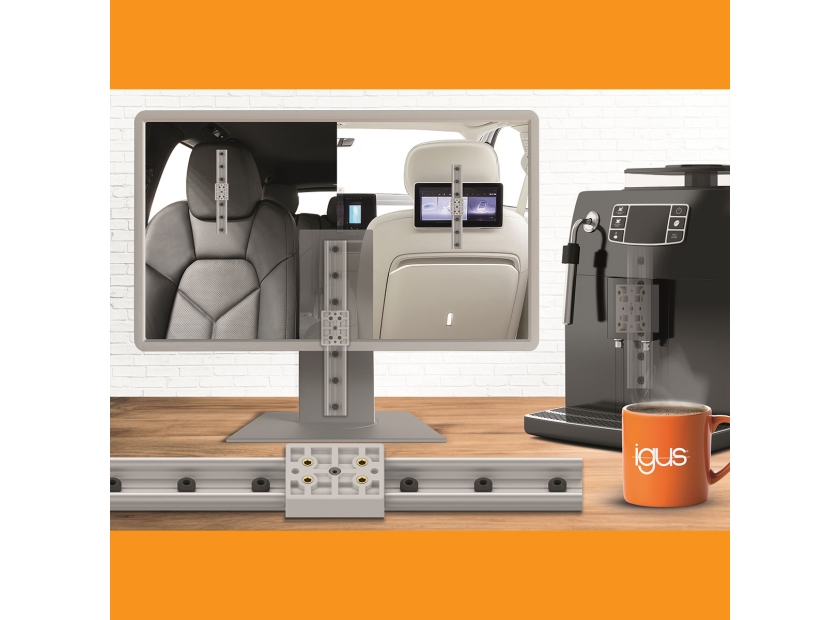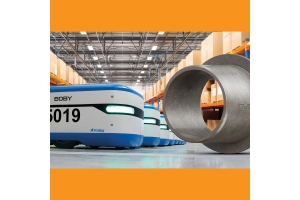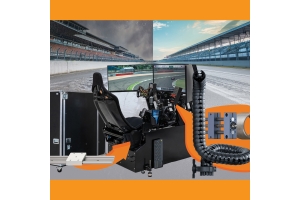PTFE-free positional system from igus for precise adjustment
Now it's clicked: PTFE-free positional system from igus for precise adjustment
Compact, lightweight and low-maintenance: new drylin W linear guide with snap function for precise adjustments - even in small installation spaces
Whether moving to specified spots with a sensor, adjusting a headrest to the desired height or getting a screen into an ergonomic position until it clicks: igus has launched the new linear guide with PTFE-free drylin WWP locking carriages for simple positioning tasks, e.g. in the interior. The solution is intuitive, compact, durable and, thanks to the material combination of lubrication-free high-performance plastics and aluminium, particularly light, hygienic and low-maintenance.
People like comfort and appreciate the possibility of individualisation. It is therefore not surprising that, as technology advances, more and more objects are identified that can be individually positioned for comfortable and ergonomic use - from sofas with leg rests and screens in vehicle cabins to headrests and armrests on aeroplanes and trains. Adjustment is particularly convenient when it requires as few movements as possible. "A lot of manufacturers want linear guides with a snap mechanism that are as minimalist as possible and do not require levers or other complex mechanical and electrical components," says Michael Hornung, Product Manager drylin Linear and Drive Technology at igus. "We have therefore developed the new linear guide drylin WWP with snap function, which allows uncomplicated and cost-effective positioning."
Precise, flexible and strong adjustments
The linear guide consists of two components: a carriage made of high-performance plastic, which can be connected to the object to be moved, and an aluminium linear rail, on which the movement takes place - for example the adjustment of a sofa headrest. The special feature: at regular intervals, the rail contains small polymer rings that are just a few millimetres. On the underside of the carriage there is a steel ball that sits on a spring with a pretension that can be chosen. As soon as a predefined position is reached during adjustment, the ball engages with an audible click and the object remains firmly in position. The maximum static load capacity is 100N vertically to the guide and 50N horizontally to the guide. To release the carriage, the user only needs to apply enough force to push the ball out of the recess. The system then moves freely again until the ball engages in the next position. Says Hornung: "The system is very intuitive, durable and fail-safe thanks to the absence of complex mechanical components." This is also confirmed by tests in the company's own 4,000m2 test laboratory.
65% lower weight and dry-running operation without lubrication
Users can adapt the new linear system to their application. The rails are available in lengths of up to 3,000mm and as hard anodised, silver anodised or black anodised versions. For customised drilling patterns, igus also offers rail profiles without holes. The polymer carriages are available in two sizes: installation size 1030 (slide dimensions: L60xW56xH24mm) and miniature size 0620 (slide dimensions: L40xW32xH14 mm). "With these dimensions, the system is more compact and lighter than systems with recirculating ball bearings. The lightweight design also means that it is flexible and can be transported, which makes it ideal for interiors where space is often at a premium," says Hornung. "Compared to aluminium miniature carriages, users save up to 65% in weight." In addition, no external lubrication is required. The indexing carriage is made of a high-performance plastic with integrated solid lubricants that ensure clean, low-maintenance and consistently smooth operation over several years. In addition, the high-performance plastic used is free from around 100 PFAS chemicals that could be subject to future regulations and also meets the low-fogging requirements in the automotive sector.







